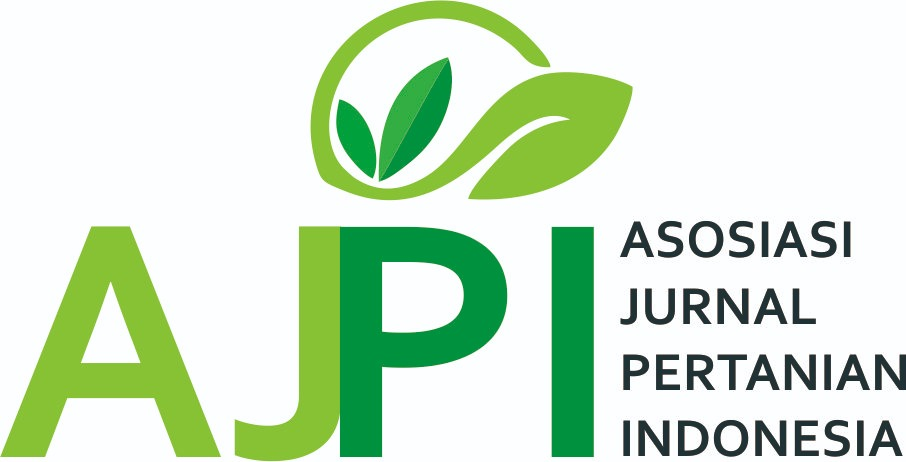Growth And Production Of Several Rice Varieties With The Biochar From Different Sources Of Materials
Abstract
This research will be carried out in the experimental land of the Tanjung Morawa Seed Center, Lubuk Pakam District, Deli Serdang Regency. The purpose of this research is to find out how the growth and production of several varieties of irrigated rice with biochar from different source. The experimental design used in this study was a split plot design with 2 factors. The first factor is: The provision of various sources of biochar with 5 levels of treatment: No biochar, rice husk biochar, coconut shell biochar, oil palm empty bunch biochar and jengkol skin biochar. The second factor was: Ciherang, Hipa 19, Inpari 33. Parameters observed were plant height (cm), number of panicles, weight of 1000 grains (g and soil analysis. The results showed that the use of several varieties of lowland rice on the growth and production of irrigated rice had a significant effect on the height of rice plants from 6-9 WAP. The use of several varieties of rice such as Ciherang, Hipa 10 and Inpari 33 varieties showed differences in plant height starting at the age of 6 WAP. The results of the final analysis of paddy fields after being given biochar treatment experienced an increase in nutrients such as N-total, P, K and organic C in all treatments.
Downloads
References
Badan Pusat Statistik. (2020). Luas Panen dan Produksi Provinsi Sumatera Utara 2020. ISSN/ISBN : 978-602-331-114-9.
Badan Pusat Statistik.( 2020). Luas Panen dan Produksi Padi di indonesia 2020. ISSN/ISBN : 2797-7897.
Ahmad, M. S., Mehmood, M. A., Taqvi, S. T. H., Elkamel, A., Liu, C.-G., Xu, J., Rahimuddin, S. A., & Gull, M. (2017). Pyrolysis, kinetics analysis, thermodynamics parameters and reaction mechanism of Typha latifolia to evaluate its bioenergy potential. Bioresource Technology, 245, 491–501.
Chen, B., Zhou, D., & Zhu, L. (2008). Transitional adsorption and partition of nonpolar and polar aromatic contaminants by biochars of pine needles with different pyrolytic temperatures. Environmental Science & Technology, 42(14), 5137–5143.
Hartatik, W., Wibowo, H., & Purwani, J. (2015). Aplikasi biochar dan tithoganic dalam peningkatan produktivitas kedelai (Glycine max L.) pada Typic Kanhapludults di Lampung Timur. Jurnal Tanah Dan Iklim, 39(1), 51–62.
Ketan, R., & Sarkar, G. (2014). Studies on variability, heritability, genetic advance and path analysis in some indigenous Aman rice (Oryza sativa L.). Journal of Crop and Weed, 10(2), 308–315.
Lehmann, J. (2007). A handful of carbon. Nature, 447(7141), 143–144. https://doi.org/10.1038/447143a
Mawardiana, M., Sufardi, S., & Husen, E. (2013). Pengaruh residu biochar dan pemupukan NPK terhadap dinamika nitrogen, sifat kimia tanah dan hasil tanaman padi (Oryza sativa L.) musim tanam ketiga. Jurnal Manajemen Sumberdaya Lahan, 2(3), 255–260.
Preston, C. M., & Schmidt, M. W. I. (2006). Black (pyrogenic) carbon: a synthesis of current knowledge and uncertainties with special consideration of boreal regions. Biogeosciences, 3(4), 397–420.
Shahidullah, S. M., Hanafi, M. M., Ashrafuzzaman, M., Ismail, M. R., & Salam, M. A. (2009). Tillering dynamics in aromatic rice genotypes. International Journal of Agriculture and Biology, 11(5), 509–514.
Sudrajat, R., & Soleh, S. (1994). Petunjuk teknis pembuatan arang aktif. Puslitbang Hasil Hutan Dan Sosial Ekonomi Kehutanan.
Sumihar, H. (2015). Pemanfaatan Biochar dari Kendaga dan Cangkang Biji Karet Sebagai Bahan Ameliorasi Organik pada Lahan Hortikultura Di Kabupaten Karo Sumatera Utara.
Suswana, S. (2019). Pengaruh Biochar terhadap Pertumbuhan Padi dalam Sistem Aerobik. Agrotechnology Research Journal, 3(1), 44–49. https://doi.org/10.20961/agrotechresj.v3i1.30396
Thahir, R. (2010). Revitalisasi penggilingan padi melalui inovasi penyosohan mendukung swasembada beras dan persaingan global. Pengembangan Inovasi Pertanian, 3(3), 171–183.
Yamato, M., Okimori, Y., Wibowo, I. F., Anshori, S., & Ogawa, M. (2006). Effects of the application of charred bark of Acacia mangium on the yield of maize, cowpea and peanut, and soil chemical properties in South Sumatra, Indonesia. Soil Science and Plant Nutrition, 52(4), 489–495.
Copyright (c) 2022 Prisman perdana Hutapea

This work is licensed under a Creative Commons Attribution-ShareAlike 4.0 International License.
Author retains the copyright and grants the journal the right of first publication of the work simultaneously licensed under the Creative Commons Attribution-ShareAlike 4.0 License that allows others to share the work with an acknowledgement of the work's authorship and initial publication in this journal













